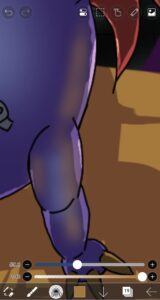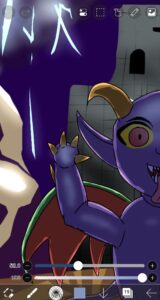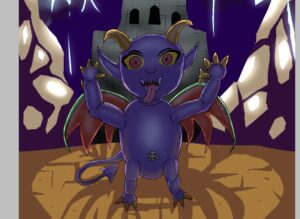Hello, today I will explain how to add a three-dimensional effect to a picture by adding reflections.
1. First, what is the basics of reflection?

Reflection is the depiction of the phenomenon in which light bounces off an object. By expressing the appearance of an object reflected on a surface that reflects light, such as water, a mirror, or glass, you can add realism and depth to your picture. If you draw reflections correctly, your picture will look more realistic.
2. How to decide where to draw reflections

First, decide where to draw the reflection. The place to draw the reflection is a surface that reflects light well, such as the surface of water, a mirror, or glass. At this time, consider the position of the light source and the arrangement of the object and decide where the reflection will appear.
In addition, it is important to check the light source and be aware of the reflective surface at the same time.
Before drawing a reflection, check where the light source is. The direction of the light source determines where the reflection will be reflected.
If the reflective surface is flat, the object will be reflected as it is. If the surface is slightly wa vy, like the surface of water, the reflection will also look a little distorted.
3. The process of drawing a reflection starts with capturing the shape.

When drawing a reflection, think about it in the same way as drawing an actual object. However, since a reflection is merely a "reflection," the technique is to draw it in a slightly lighter, paler color than the original object.
First, draw the shape of the object that will be reflected. Draw the shape of the original object as is, but if the reflective surface is water or glass, consider distorting it slightly.
Try adjusting the color or adding blur.
Draw the color of the reflected object a little lighter and softer than the original color. This will give it a transparent look that is characteristic of a reflection.
Next, to make the reflection look natural, it is a good idea to add a little blur. In particular, reflections on the surface of water often look a little blurred.
4. Tips for making reflections more realistic

To draw a realistic reflection, pay attention to the details. If you can express the reflection well, the entire painting will stand out even more.
Next, consider the influence of the environment, and then try to recreate the glossiness of the object and add small reflected lights.
Reflective surfaces can change color depending on the surrounding environment. For example, the reflection can also be reddish under a sunset.
If the object in which the reflection is reflected is shiny, try to express that glossiness. The reflection will be sharp and clear.
You can also emphasize the presence of the reflection by adding small reflected lights around the edges and surroundings of the object. This will make the picture more realistic.
5. How to finish a picture using reflections

Making good use of reflections will make the whole picture more attractive. Finally, review the balance of the whole picture, including the reflection, and finish it.
Next, after checking the overall harmony, consider adjusting the color.
Check the balance with other parts so that the reflection looks natural. If the reflection is too strong, the whole picture may look unnatural, so be conscious of the overall harmony.
Next, check whether the color of the reflection blends in with the other parts and adjust it if necessary. Especially when a reflection is reflected, make sure it does not look out of place with the surrounding colors.
Making small corrections is also a technique
Finally, look over the whole picture and make small corrections. Check whether the reflection is well expressed and whether the shadows and light are balanced.
6. Summary of how to add reflections to a picture to create a three-dimensional effect
Incorporating reflections into a picture can add realism and depth. When drawing reflections, be aware of the light source and reflective surface, and add natural colors and blurring to create a more realistic expression. By practicing, you will be able to draw pictures that make effective use of reflections. First, try drawing while observing the reflections on the surface of water or mirrors that you are familiar with.